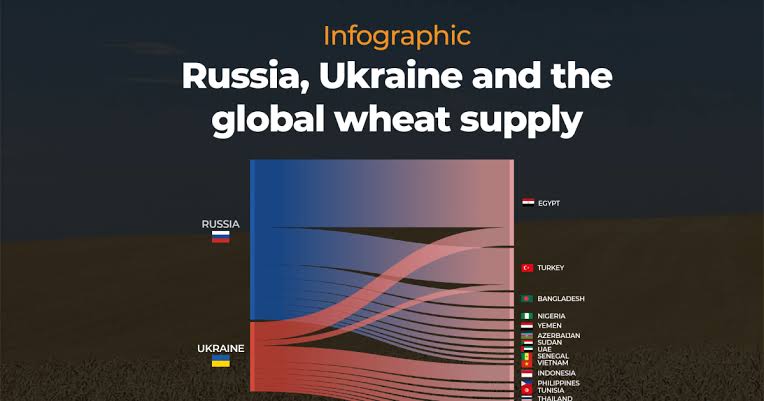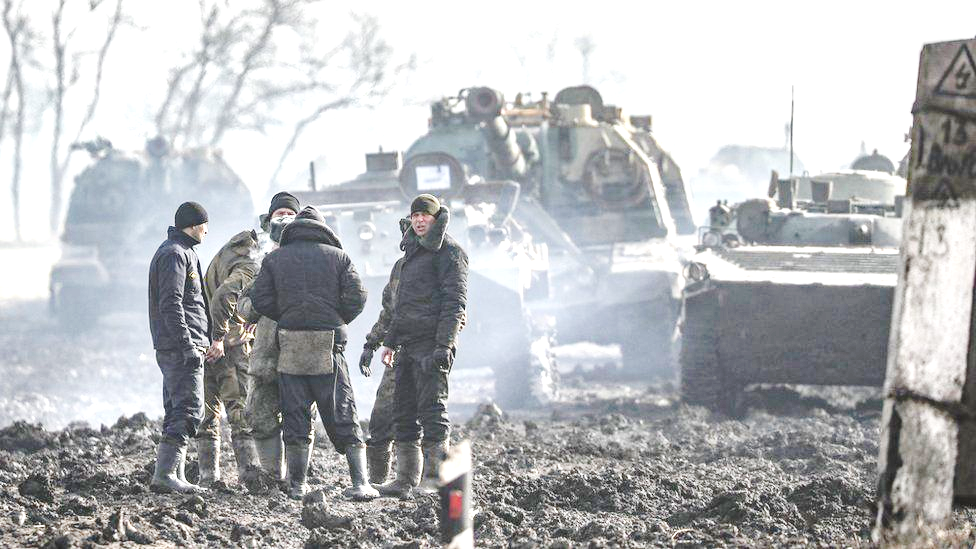
Faith Nyasuguta
Following Russia’s invasion of Ukraine, wheat and other grains are back at the heart of geopolitics. The two nations play a key role in the world’s agricultural market.
For decades, there has been significant agricultural trade between nations in Africa, Russia and Ukraine. In 2020 African countries imported agricultural products worth $4 billion from Russia. Some 90 percent of this was wheat, and six percent was sunflower oil.
Among the importing nations were Egypt, which accounted for nearly 50 per cent of the imports, followed by Sudan, Nigeria, Tanzania, Algeria, Kenya and South Africa.
At the same time, Ukraine exported $2.9 billion worth of agricultural products to the African continent in 2020. About 48 percent of this was wheat, 31 percent maize, and the rest included sunflower oil, barley, and soybeans.
in the global commodities market, Russia and Ukraine are substantial players. Of all the global wheat, Russia produces about 10 percent while Ukraine accounts for four percent. Combined, this is about the size of the European Union’s total wheat production. Wheat is for domestic consumption and well as export markets.
The duo accounts for 25 per cent of global wheat exports. In 2020 alone, Russia accounted for 18 percent, and Ukraine eight percent.
Together, the two nations are notable players in maize, responsible for a maize production of four percent.
Despite that, Ukraine and Russia’s contribution is even more significant in exports, accounting for 14 percent of global maize exports in 2020.
Russia and Ukraine are also among the leading producers and exporters of sunflower oil. In 2020, Ukraine’s sunflower oil exports accounted for 40 percent of global exports, with Russia accounting for 18 percent of global sunflower oil exports.

FOOD STABILITY
Russia’s military action has sparked panic among some analysts. The fear is that the worsening conflict could disrupt trade with significant consequences for global food stability.
This could lead to huge rises in the price of global grains and oilseed, which have been among the key drivers of global food price increases since 2020. This has been primarily because of dry weather conditions in South America and Indonesia that resulted in poor harvests combined with rising demand in China and India.
Disruption in trade, because of the invasion, in the significant producing region of the Black Sea would add to elevated global agricultural commodity prices – with potential knock-on effects for global food prices. A rise in commodities prices was already evident just days into the conflict.
Currently, Africa is a net importer of wheat and sunflower oil. On top of this, there are worries about drought in some regions of the continent. Disruption to shipments of commodities would add to the general worries of food price inflation.

EXPECTATIONS
How far the potential upswing in the global grains and oilseed prices goes is totally tied to the magnitude of disruption and the length of time that trade will be affected.
At the moment , this can be seen as an upside risk to global agricultural commodity prices, which are already elevated. In January 2022, the FAO Food Price Index averaged 136 points up by one percent from December 2021 – its highest since April 2011.
Vegetable oils and dairy products mainly underpinned the rise.
In days before Russia’s move, there was a sharp rise in the international prices of a number of commodities. These included maize (21 percent), wheat (35 percent), soybeans (20 percent), and sunflower oil (11 percent) compared to the corresponding period a year ago. This is noteworthy as 2021 prices were already elevated.
Viewing this from an African agriculture perspective, the impact of the war will be felt in the near term via the global agriculture commodity prices channel.
A jump in prices will be beneficial for farmers. For farmers specialising in grain and oilseed , the surge in prices presents an opportunity for financial gains. This will be particularly welcome given higher fertiliser costs which have strained farmers’ finances.
The Russia-Ukraine conflict also comes at a time when the drought in South America and rising demand for grains and oilseeds in India and China has put pressure on prices.
However, rising commodity prices are bad news for consumers who have already seen food price rises over the past two years.
The Russia-Ukraine conflict means that pressure on prices will persist. The two countries are major contributors to global grain supplies. The impact on prices from developments affecting their output cannot be understated.
In Africa, some countries such as South Africa, benefit from exporting fruit to Russia. In 2020 Russia accounted for seven percent of South Africa’s citrus exports in value terms. And it accounted for 12 percent of South Africa’s apples and pears exports in the same year – the country’s second-largest market.
For years, Russia has been the fourth-biggest buyer of Kenyan tea, having taken up produce worth $54 million in the 11 months to November 2021.
Russia and Ukraine’s agricultural imports from the continent are marginal, in Africa’s perspective as they average only $1.6 billion in the past three years. The dominant products are fruits, tobacco, coffee, and beverages in both countries.
CONTAGION EFFECT

Every agricultural role-player is keen on the developments in the Black Sea region. The impact will be felt in other regions, such as the Middle East and Asia, which also import a substantial volume of grains and oilseeds from Ukraine and Russia. They too will be directly affected by the disruption in trade.
A lot is still not known about the geopolitical challenges that lie ahead. But for African countries, there are reasons to be worried given their dependency on grains imports.
In the near term, countries are likely to see the impact through a hike in prices, rather than an actual acute deficiency of the commodities. Other wheat exporting countries such as Canada, Australia and the US stand to benefit from any potential near term surge in demand.
In the long run, the goal should be to deescalate the conflict. Russia and Ukraine are deeply embedded in the world’s agricultural and food markets. This is not only through supplies but also through agricultural inputs such as oil and fertiliser.





Recent Comments